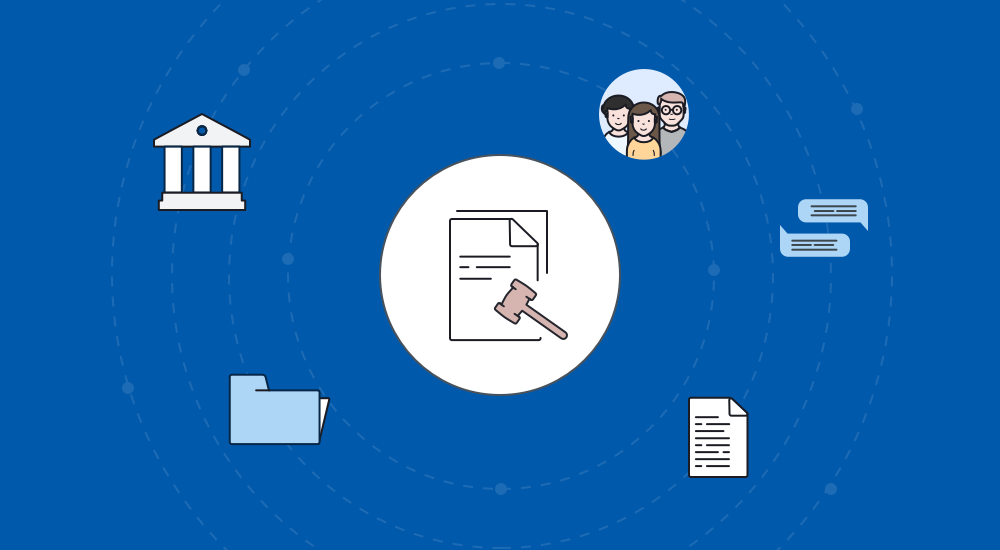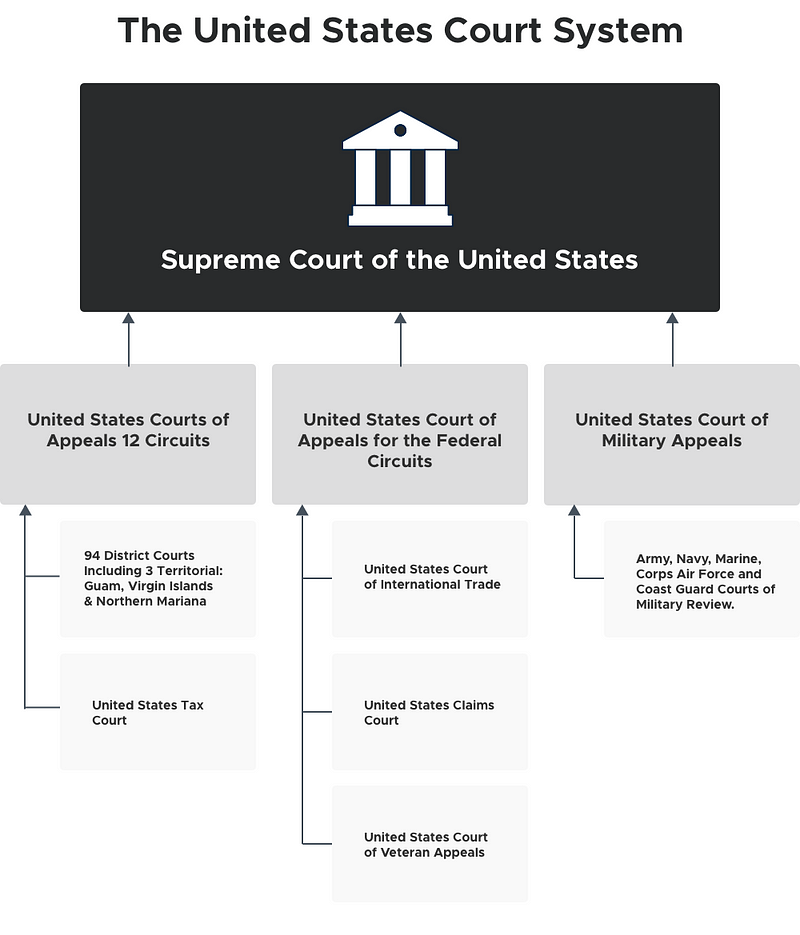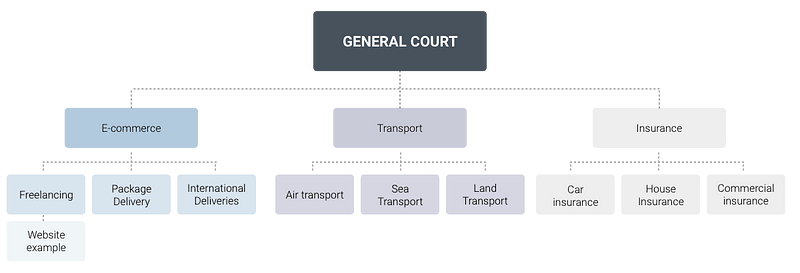How Policies Work in Kleros
Traditional justice systems have courts specialized in different topics: commercial, civil, criminal, etc. In the same vein, Kleros has subcourts specialized in different types of disputes.

By Marco Mauer and Federico Ast
Kleros is a general purpose arbitration system which can be used to solve a large number of disputes. In this sense, it’s no different from traditional government courts, which were also designed with a multi purpose intent.
Traditional justice systems have courts specialized in different topics: commercial, civil, criminal, etc. In the same vein, Kleros has subcourts specialized in different types of disputes. Each of these subcourts has a policy that provides guidance to jurors on how they should evaluate evidence and adjudicate cases.


The website subcourt will very likely be the subcourt of an e-commerce court. This could shorten the policy in practice as many rules it creates are applicable to most e-commerce cases and can therefore be part of a superior e-commerce policy that applies in the website subcourt as well. Subcourt policies can go from very simple descriptions (only a few lines) to really complex sets of rules. Let’s review an example of a subcourt policy concerning website disputes.
A Policy on Website Disputes
Alice wants Bob to create a website. Bob does so. Alice is not satisfied with the delivered product. She claims a page is missing. Since Bob refuses to acknowledge this, she creates a dispute in Kleros’. As was agreed in the contract, the dispute will be solved by three jurors in the Website Disputes subcourt. The subcourt policy may look something like this:
§ 1 Purpose of the Court
(1) The court rules on disputes in which a customer (plaintiff) refuses to pay the creator of a website they ordered (defendant) because it allegedly does not meet the requirements set out in a contract.
(2) Furthermore, the court rules on disputes that can be decided by applying this statute respectively and that a hypothetical average juror of this court is qualified to decide.
(3) The court decides whether it has jurisdiction. If it finds that it does not have jurisdiction jurors vote 0 (=refuse to arbitrate).
§ 2 Agreements of the Parties
(1) If the parties have a written agreement regarding the specifications of the disputed website, it is the plaintiff’s obligation to submit it into evidence and convince the court that it is genuine.
(2) When there is no written agreement, the plaintiff can present communication with the defendant prior to the agreement to prove that the defendant did not meet the requirements agreed upon.
(3) The court considers the evidence on the agreement provided by the plaintiff as genuine even when the plaintiff cannot prove it as long as the defendant does not claim it to be false.
§ 3 Website
It is the defendant’s obligation to provide the court with access to their work.
§ 4 Defect
(1) When the court finds the website to have a defect it decides in favor of the plaintiff.
(2) A website is considered free from defects if it is delivered as agreed. When there is no agreement on a relevant aspect it is considered to be delivered free from defects:
1. if it is suitable for the use intended under the contract,
2. if it is suitable for the customary use and its quality is as the plaintiff may expect it.
(3) The website has a defect when it does not meet the expectations the defendant creates through his advertisement of his service.
§ 5 Non-binary Decisions
(1) When the arbitrable contract allows the jurors to vote on more than two possible outcomes and the court finds the website to have a defect, it considers what verdict is appropriate for the kind of defect.
(2) When the defect can be fixed and the plaintiff cannot prove that he has no interest in a delayed delivery of the website the court allows the defendant to fix the website.
Structure of the Policy
This policy guides jurors through the disputes arbitrated in the subcourt, from their very creation to the rendering of a verdict. Let’s go through it step by step.
Section 1. Court Purpose.
Section 1 defines the purpose of the court. In Kleros there are several subcourts for special types of disputes. This ensures that jurors are only dealing with cases they are qualified to decide. Therefore, the very first question the jurors have to consider is whether the submitted dispute is actually in the right subcourt.
The Website Subcourt is for website disputes, obviously. The policy allows it to deal with disputes that are not about websites but about similar products, as well. If Alice had submitted an insurance case, for instance, jurors would have refused to arbitrate as it has nothing to do with websites. Alice would then have to find another subcourt. In our example, however, Alice has submitted her dispute to the right subcourt so the jurors can decide on the case.
Section 2. Proof of Agreement.
In order to make a decision, jurors need evidence. As Alice is claiming that Bob has failed to fulfill some obligations he had, it is her obligation to prove what the agreement was. This is stated in Section 2. Alice can provide the jurors with a plain-text agreement or some e-mail correspondence. The evidence must show what features Bob agreed to implement.
Usually, it is not hard to prove the agreement. When Alice and Bob create the smart contract that selects Kleros as arbitrator, they can store the hash of their agreement on chain. Then Alice just has to reveal the contract to the jurors and they can verify its genuineness with this hash. Bob could reveal the contract as well but if no contract is revealed at all, Alice’s claim shall be rejected.
Section 3. Access to Evidence.
Once the jurors know what the parties agreed on they have to check whether the website actually meets the requirements. In order to do so, they have to be able to see it. As Bob was required to create one, it is his job to show it to the jurors. This is specified in Section 3.
Section 4. Decision Rules.
Section 4 helps jurors decide whether a website is as it should be when the requirements that are stated in the contract are not clear enough to decide. In our example, Alice decides that a certain page that should have been provided is actually missing. When the contract that Alice submitted clearly states that Bob has to deliver the said page, it is clear that she should win the dispute.
If it is not stated explicitly, however, Bob wins, unless it is clear that the missing page would be reasonably expected to be delivered in a website development contract.
Section 5. Decision Alternatives.
In our example, the arbitrable smart contract gives jurors just two options: they can either make Alice pay or allow her to refuse payment. More complex arbitrable contracts could allow jurors to grant Bob some more time or reduce the price Alice has to pay. Section 5 deals with these special types of contracts.
As you can see there are just five quite simple rules that help making the arbitration process go smoothly and provide the jurors with objective requirements they can check.
Other Policies and Contributing
The subcourt policy in this article provides procedural guidance for jurors to adjudicate disputes in the Website Subcourt. But there are other policies that prohibits jurors from ruling on immoral cases like those concerning assassination markets. Other policies define how policies shall be formatted. You can find all policy drafts here. Feel free to contribute so we can pass the first policies as soon as the Kleros governance mechanism is deployed.
Policies are in some way unknown territory. We are looking forward to spectating what ideas the users come up with. This article is supposed to give the readers an idea of what policies are and motivate interested token holders to participate in the upcoming discussions revolving around them.
Join Kleros!
Join the community chat onTelegram.
Visit our website.
Follow us on Twitter.
Join our Slack for developer conversations.
Contribute on Github.


